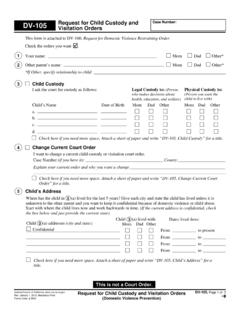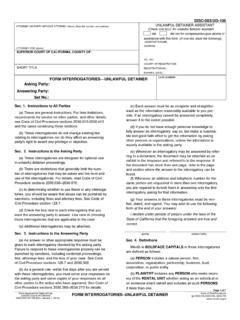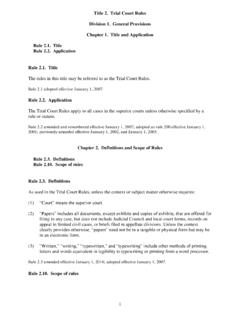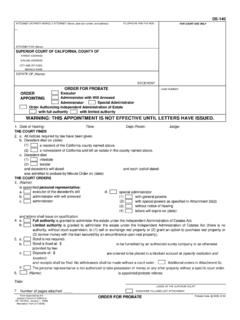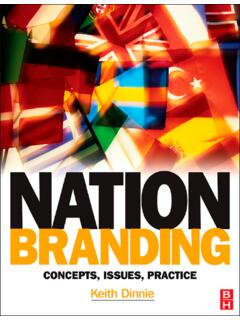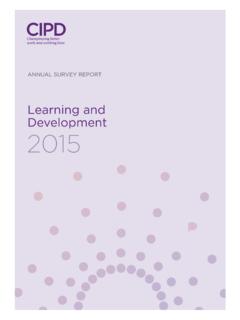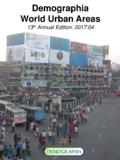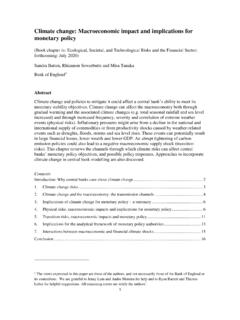Transcription of HUMAN TRAFFICKING IN CALIFORNIA
1 HUMAN TRAFFICKING IN CALIFORNIA . TOOLKIT FOR JUDICIAL OFFICERS. 2017. Judicial Council of CALIFORNIA Operations and Programs Division Center for Families, Children & the Courts 455 Golden Gate Avenue San Francisco, CALIFORNIA 94102-3688. Prepared by the Center for Families, Children & the Courts. Copyright 2017 by Judicial Council of CALIFORNIA . All rights reserved. Except as permitted under the Copyright Act of 1976, no part of this publication may be reproduced in any form or by any means, electronic, online, or mechanical, including the use of information storage and retrieval systems, without permission in writing from the copyright owner. Permission is granted to nonprofit institutions to reproduce and distribute for educa- tional purposes all or part of the work if the copies are distributed at or below cost and if the Judicial Council of CALIFORNIA , Center for Families, Children & the Courts are credited.
2 For additional copies of this toolkit, please call the Center for Families, Children & the Courts at 415-865-7739, or write to: Judicial Council of CALIFORNIA Operations and Programs Division Center for Families, Children & the Courts 455 Golden Gate Avenue, San Francisco, CA 94102-3688. The most current version of this toolkit is also available on the CALIFORNIA Courts website at JUDICIAL COUNCIL OF C ALIFORNIA. Hon. Tani G. Cantil-Sakauye Chief Justice of CALIFORNIA and Chair of the Judicial Council Mr. Martin Hoshino Administrative Director Ms. Millicent Tidwell Chief Operating Officer CENTER FOR FAMILIE S , CHILDREN & THE COUR T S. Dr. Charlene Depner Director Ms. Nancy Taylor Manager Dr. Chelsie Bright Supervising Research Analyst Dr. Amy J. Bacharach Senior Research Analyst, Author Ms.
3 Donna Strobel Analyst, Author CONTRIB UTOR S. Hon. Elizabeth Lee Superior Court of San Mateo County Hon. Catherine Pratt Superior Court of Los Angeles County Ms. Kulvindar Rani Singh San Francisco District Attorney's Office Acknowledgements This toolkit was made possible with the coordination, support, and assistance of the following people and organizations: Bobbie Welling Christine Cleary The Judicial Council of CALIFORNIA 's Collaborative Justice Courts Advisory Committee State Court Collaborative National Association of Women Judges National Center for Youth Law District Attorney George Gasc n, San Francisco District Attorney's Office CALIFORNIA Child Welfare Council's CSEC Action Team Santa Barbara County's Commercially Sexually Exploited Children (CSEC) Program Los Angeles County STAR Court Self-Survey: How Much Do You Know About HUMAN TRAFFICKING ?
4 The following self-survey was created by Strategies for Youth, Connecting Cops & Kids on the economics of CSEC. How much do you know about HUMAN TRAFFICKING and the sexual exploitation of youth?1. 1. Drug TRAFFICKING is the first major criminal activity in the United States. What is the second? _____. 2. Why is the TRAFFICKING of humans becoming more prevalent than the TRAFFICKING of drugs? _____. 3. The annual global income of HUMAN TRAFFICKING is estimated to be: a. $290 million b. $32 billion c. $39 million 4. Approximately how many American children or youth can be classified as sex trafficked . each year? a. 100,000 b. 250,000 c. 50,000. 5. United States businesses that profit from Commercial Sexual Exploitation of Children include: a. Internet companies d.
5 Massage parlors g. Media b. Mobile phone providers e. Spas h. All of the above c. Airlines, busses, and railroads f. Hotels and motels 6. One study in Atlanta, Georgia found that pimps can gross how much on average (weekly)? a. $11,780 b. $23,000 c. $32,833. 7. What percentage of income does an exploiter keep when the employee is a child or youth? a. 50% b. 20% c. 80% d. 100%. 8. Excluding prostitution-related offenses, for what criminal charges do police most often arrest youth who are commercially sexually exploited? _____. _. 9. What are some ways pimps launder the money they earn from selling children and youth? a. Massage parlors c. Car dealerships e. All of the above b. Clubs and restaurants d. Car rental companies 10. What recent economic change gave the biggest boost to HUMAN TRAFFICKING ?
6 A. The recession b. The economic recovery c. The Affordable Health Care Act 1. For answers to quiz, see Table of Contents I. Introduction.. 1. II. summary : HUMAN TRAFFICKING Cases in CALIFORNIA 's Courts: Successful Practices in the Emerging Field of HUMAN TRAFFICKING .. 3. III. summary : Improving CALIFORNIA 's Multi-System Response to Commercially Sexually Exploited Children: Resources for Counties.. 6. IV. Legislative History.. 9. V. Judicial Ethical Considerations .. 17. VI. Motions In Limine and 402 Hearings in Criminal Trials.. 19. VII. Screenings and Assessments .. 31. VIII. Protocols.. 33. IX. Bench Cards.. 34. TRAFFICKING -Related Commonly Used Terms .. 35. TRAFFICKING -Related Acronyms.. 41. Immigration Issues.. 42. How to Identify and Handle TRAFFICKING Victims in the Courtroom.
7 45. What To Do If a Victim Is a Dependent or Ward .. 48. Important Victim Services.. 50. X. Organizations Providing Services for Victims .. 52. XI. Promising Practices for Presiding Judges .. 57. XII. Hypothetical Case.. 59. XIII. The Overlap between Child Welfare and Juvenile Justice: a Case Study.. 61. XIV. Girls' Court .. 63. XV. Organizations Providing Grant Funding .. 70. XVI. Training Module.. 71. XVII. Further Reading .. 74. XVIII. Frequently Asked Questions.. 75. Appendix A: Matrix of Known TRAFFICKING Screening Tools.. 78. Appendix B: Model Interagency Protocols.. 80. Appendix C: STAR Court Protocol/Handbook.. 104. I. Introduction The growing awareness of HUMAN TRAFFICKING has spurred questions about what TRAFFICKING cases look like and how to best approach victims in the court context.
8 There are several types of HUMAN TRAFFICKING , including domestic servitude, forced labor, and sex This toolkit focuses on sex TRAFFICKING , in which someone is coerced (either physically or emotionally), forced, or deceived into prostitution or maintained in prostitution through coercion, including by pimps. Victims of sex TRAFFICKING are often sold via the Internet and escort services, in strip clubs, in brothels posing as massage parlors or other legitimate businesses, or on the street as prostitutes. The average age that girls are first exploited is 12 to 14, and the average age that boys and transgender youth are exploited is 11 to HUMAN TRAFFICKING cases present themselves in many complicated and unassuming ways in courtrooms. With state and federal TRAFFICKING laws being strengthened recently, more victims and offenders are appearing in court than ever before.
9 And because sex TRAFFICKING has become an increasingly hot topic in the media, judicial officers and other justice stakeholders have asked for guidance on how best to deal with these cases. This toolkit is one of several responses to those requests. This toolkit contains information that is useful and relevant to judicial officers who may come across the variety of cases in which a sex TRAFFICKING victim may be a party or witness. To start, the summaries of the AOC Briefing HUMAN TRAFFICKING Cases in CALIFORNIA 's Courts: Successful Practices in the Emerging Field of HUMAN TRAFFICKING and the Child Welfare Council's report Ending the Commercial Sexual Exploitation of Children: A Call for Multisystem Collaboration in CALIFORNIA provide overviews of the definitions of TRAFFICKING and the scope of the problem, primarily in juvenile delinquency and child welfare.
10 Chapter IV contains a legislative history detailing the federal and state laws related to HUMAN TRAFFICKING to date, particularly sex TRAFFICKING . Chapter V discusses ethical considerations for judicial officers, such as being an advocate for a TRAFFICKING victim without compromising neutrality. In cases that involve a possible victim, several types of hearings may be necessary. Chapter VI discusses TRAFFICKING -related 402 hearings that may come up, particularly related to the CASE Act (Proposition 35). Chapter VII discusses the importance of screenings and assess- ments to identify TRAFFICKING victims, as well as instruments that are currently available for law enforcement, child welfare, and probation departments. Chapter VIII discusses examples of TRAFFICKING case-related protocols.
